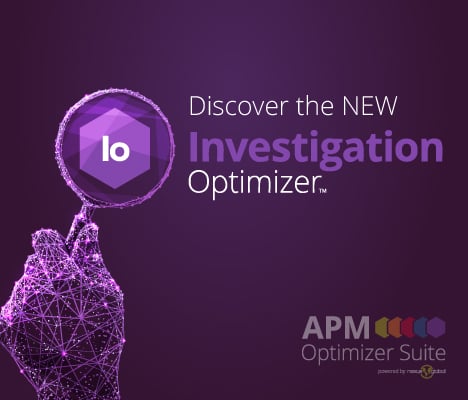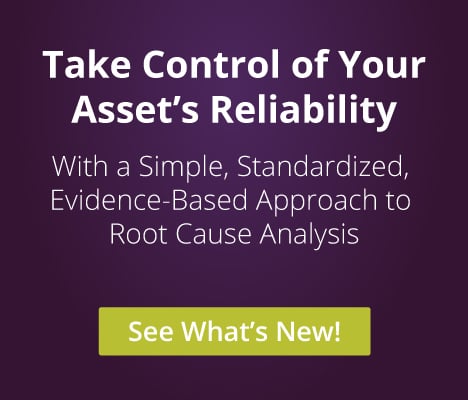Implementing an Asset Management Data Standard (AMDS)
An Asset Management Data Standard (AMDS) defines what maintenance data to collect, how to structure it, and how it flows through CMMS/EAM so reliability teams can trust KPIs. Use this 6‑step playbook—hierarchy → classes/attributes → work categories → codes → processes → governance—to turn noisy data into decision‑ready insight.
What Is an Asset Management Data Standard (AMDS)?
An Asset Management Data Standard (AMDS) defines what maintenance data to collect, how to structure it, and how it flows through your CMMS/EAM so planners and reliability teams can find assets faster, code work consistently, and trust KPIs like MTBF and MTTR. With a clear standard, data becomes comparable across sites and systems, accelerating planning and surfacing bad actors for root‑cause work.
Why AMDS Matters for CMMS/EAM & Reliability
Programs stall when hierarchy, classes/attributes, and code usage drift. AMDS closes that gap by giving you a common language for assets and work. The payoff is decision‑ready data that supports scheduling, cost rollups, failure analysis, and benchmarking across single sites and multi‑plant networks.
The 6‑Step AMDS Implementation Playbook
1) Asset Hierarchy (ISO‑aligned)
Publish site → area → system → equipment rules that match how you report and maintain. Align to ISO‑style guidance so critical systems roll up cleanly to KPIs and cost centers. Include naming patterns, parent/child rules, and validation to prevent free‑text drift.
An Inconsistent asset hierarchy makes it difficult to understand the location of the physical asset in the facility as well as its relationship to other equipment within the process. ISO14224 provides guidelines for what the asset hierarchy should look like. Impacts from a consistent hierarchy will provide potential impacts as mentioned below:
- Work identification—A well-defined hierarchy makes it easy to locate the asset in the system and assign work to it. This improves planning efficiency, wrench time, and safety, which can reduce maintenance costs.
- Cost visibility – By identifying work to the correct asset, costs can be tracked against the asset. In today's low-cost environment, this helps in the Pareto analysis of what are the high-cost assets.
2) Equipment Classes & Required Attributes
Define equipment classes with required attributes (units, ranges, picklists). Examples: drive type, capacity, manufacturer/model, criticality, safety/environment flags. Lock these with picklists and field rules so data is complete and comparable.
Develop a standardized list of minimum equipment characteristics required for each specific asset class. This will ensure that:
- The operating limits (safe operating limit and integrity operating limit) for your equipment have been defined in the CMMS and are easily accessible. This should be used as a triggers for alerts during condition monitoring programs and operator rounds.
- Classifying assets in asset classes will help the maintenance and reliability engineering teams "bucket" data in a way that dedicated teams with specific skill sets can address.
For example - centrifugal pumps within the rotating equipment class have the highest maintenance repair costs.
3) Work Categories
Standardize work types (corrective, preventive, predictive/condition‑based, project), priorities, and request types. This improves backlog visibility and plan/pack cycles and lets you separate true PM load from corrective work.
ISO14224 provides excellent guidelines on the categories of maintenance work and related activities. By enforcing a process and monitoring it on a frequent basis, maintenance work coming through the CMMS can be categorized. This categorization of maintenance work provides the foundation of what data will be analyzed from a reliability perspective. Some key definitions include breakdown repairs, failures, operator basic care, etc. This is essential because:
- It defines the data set that will be used to analyze maintenance and reliability performance
- It helps understand the reactive versus proactive nature of maintenance
- Provides maintenance team the tools necessary to improve business processes
4) Failure/Cause Code Sets & Closeout Fields
Curate short, owned failure and cause code sets and require time and parts at closeout. Teach the difference between failure and cause, and audit weekly. Clean closeout is what makes MTBF/MTTR, bad‑actor lists, and warranty decisions trustworthy.
Defining a set of maintainable item codes, failure codes, and causes codes in a structured hierarchy will provide end users with a small set of relevant codes. For e.g., Centrifugal Pump, Seal, Leaking, and installation. By having this information over a period of time, reliability improvement efforts can be targeted, and maintenance cost optimization can be achieved. Defining these codes in a methodical way will:
- Provide end users with small set (10-15) of codes to pick from
- Set up measurement of performance for work order completion and close out
- Provide reliability and engineering teams specific and relevant information to define the problem. Typically, the cause code may not be known at the time of work execution, but efforts and metrics can be put in place to track the number of outstanding work orders/ notifications that do not have a cause code, etc.
Implementation should also define how that data will be consumed and what decisions will be made based on the data. For that purpose, the last two processes are as follows:
5) Integrated Maintenance Processes (Plan → Schedule → Execute → Close)
Map the end‑to‑end flow with readiness gates (scope locked, parts kitted, permits prepared) and a schedule freeze to protect execution. Standardize job plans (scope, tools, parts, safety, estimates) so crews work the same way across sites.
As part of the implementation, a set of business processes need to be defined to understand how information and data flow, how the maintenance work will be identified, planned, scheduled, executed, and closed out, as well as, how reliability will consume the data, analyze it, validate it and provide recommendations. I must emphasize that Maintenance and Reliability (and, for that matter, operations) are joined at the hip. One cannot function without the other.
6) Governance, Owners, Audits, KPIs
Name data owners/stewards, publish a change log, and run monthly audits. Track adoption KPIs (field completeness, code usage, closeout compliance) and update standards quarterly so they evolve with the business.
This is where leadership, governance, and performance measures are required to sustain the implementation of the program. While this piece is applicable to any implementation program, from an M&R implementation perspective, it is critical to pay attention to this because:
- Maintenance is seen as a cost center and is under pressure to reduce cost instantaneously.
- Reliability is often relied on after significant events and is not part of the continuous improvement philosophy.
- Results from reliability analytics and usage of codes are often not communicated back to the shop floor. It is important for people to realize that the codes used and the information put into CMMS are used to make data-driven decisions.
- History, History, History...It is difficult to prove that a failure was prevented and cost was avoided if it was never documented correctly.
Early Wins & Expected Outcomes
-
Faster planning from clean hierarchy and classes
-
Accurate cost rollups tied to attributes and codes
-
Better RCA and bad‑actor identification via trustworthy failure/cause data
-
Safer work from standardized job plans and permits
Get Help Building Your Standard
FAQ
What’s the first step?
Publish the hierarchy + class/attribute model and lock it with validation/picklists; then normalize codes and enforce closeout.How do we sustain it?
Governance: named owners, change control, quarterly updates, and monthly audits.Which KPIs improve first?
Planning lead time, schedule adherence, cost accuracy, MTBF/MTTR, and RCA quality.
Topics: Data Management, Article

Posted by
Doug Robey | CMRP, CRL
President, Nexus Global | As an innovative performance improvement and global business leader, Doug has led a diverse array of clients to design and implement successful initiatives around APM and CAPEX/OPEX. With 25+ years of craft skills and Maintenance & Reliability experience, Doug has promoted positive change within numerous asset-intensive industries; including metals, pharmaceutical, food and beverage, energy, oil and gas, and other manufacturing.




